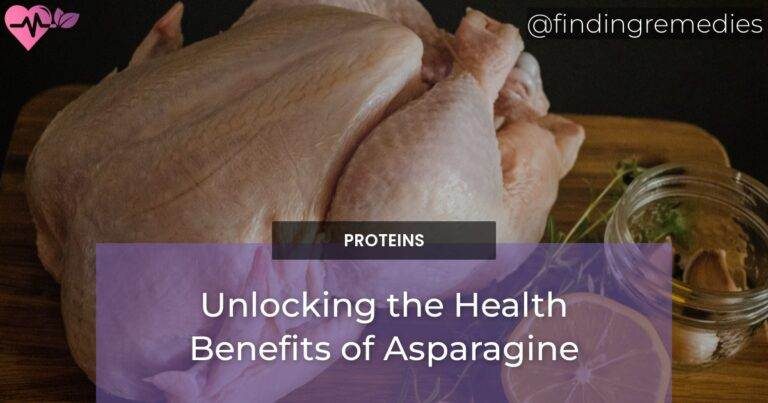Asparagine, a non-essential amino acid, plays a vital role in various physiological processes within the human body. From protein synthesis to neurological health, asparagine is crucial for overall well-being. In this comprehensive article, we will delve into the numerous health benefits of asparagine, explore its dietary sources, and discuss the recommended dosage for optimal results.
Table of Contents
The Importance of Asparagine in Protein Synthesis
Protein synthesis is a fundamental process in the body, responsible for the growth, repair, and maintenance of tissues and organs. Asparagine, being one of the building blocks of proteins, is essential for this intricate process. It aids in the formation of peptide bonds, linking amino acids together to form polypeptide chains, which eventually fold into functional proteins.
Neurological Health and Asparagine
Asparagine has been found to play a crucial role in maintaining optimal neurological health. It acts as a neurotransmitter in the central nervous system, facilitating communication between neurons. Studies have shown that asparagine assists in the development and function of the nervous system, contributing to cognitive functions such as memory and learning.
Furthermore, asparagine has been found to protect against neurodegenerative diseases. Its antioxidant properties help combat oxidative stress, reducing the risk of conditions like Alzheimer’s and Parkinson’s disease.
Dietary Sources of Asparagine
While our bodies can synthesize asparagine, it is also found abundantly in various dietary sources. Some of the richest sources of asparagine include:
Legumes
Foods like beans, lentils, and chickpeas are packed with asparagine. As a key amino acid in plants, asparagine gets stored in seeds and legumes to aid in germination and early seedling growth. The high levels get carried over when these are consumed.
Beans like navy, pinto and kidney beans contain good amounts of asparagine. Asparagine comprises 2-4% of the total amino acids in common lentils and chickpeas. Sprouting legumes can further boost asparagine levels.
Dairy Products
Dairy foods like milk, cheese and yogurt provide all essential amino acids including asparagine for growth and development. Cow milk contains around 50-90 mg per 100g. Soft cheeses have more as 50-70 mg while yogurt can have around 60-90 mg per 100g.
The amino acid profile of dairy is dependent on cow diet and genetics. Organic grass-fed sources are higher. Asparagine levels also vary by product type and processing method.
Poultry and Seafood
Poultry like chicken and turkey meat have substantial amounts of asparagine. A 100g portion of chicken can contain around 100-200 mg. Seafood including fish like salmon and shellfish like shrimp also provide good asparagine levels to the tune of 150-300mg per 100g.
The presence of all essential amino acids including asparagine allows for complete protein nutrition. Amounts vary by exact species, diet as well as method of cooking.
Whole Grains
Whole grains like quinoa, brown rice and oats contain decent amounts of asparagine per gram. Quinoa and rice can have around 150-200 mg per 100g serving. Oats, depending on whether steel-cut or rolled, provides around 100-150 mg per 100g.
Asparagine comprises 2-5% total amino acids in grains. Levels depend on variant, region grown, processing method as well as cooking technique. Sprouting the grains can enhance overall amino acid profile.
Can Aspartic Acid and Asparagine be Combined for Overall Health Benefits?
Recommended Dosage of Asparagine
Determining the optimal dosage of asparagine is essential to reap its health benefits. However, it’s important to note that asparagine requirements may vary depending on an individual’s age, sex, and overall health. Consulting with a healthcare professional is recommended to determine the appropriate dosage. However here is a general guideline.
| Age Group | Recommended Dosage (per day) |
|---|---|
| Infants (0-6 months) | Adequate intake from breastmilk or formula |
| Infants (7-12 months) | 0.5 g – 1 g |
| Children (1-3 years) | 1 g – 1.5 g |
| Children (4-8 years) | 1.5 g – 2 g |
| Children (9-13 years) | 2 g – 2.5 g |
| Adolescents (14-18 years) | 2.5 g – 3 g |
| Adults (19 years and older) | 3 g – 4 g |
| Pregnant Women | 3.5 g – 4.5 g |
| Breastfeeding Women | 4 g – 5 g |
Dosage for Medical Conditions:
| Condition | Recommended Dosage (per day) |
|---|---|
| Kidney Disease | Up to 10 g – 15 g with physician guidance |
| Liver Disease | Up to 5 g – 8 g with physician guidance |
| Burn Victims | Up to 30 g – 40 g with physician guidance |
| Sepsis | Up to 20 g – 25 g with physician guidance |
| Critically Ill Patients | Up to 25 g – 35 g with physician guidance |
Please note that these are values based on general considerations and should not replace individualized medical advice. Always consult a healthcare professional for personalized recommendations, especially if dealing with specific medical conditions.
In conclusion, asparagine, a non-essential amino acid, plays a vital role in protein synthesis and neurological health. Incorporating asparagine-rich foods into your diet can offer numerous health benefits and protect against certain diseases. Remember to consult with a healthcare professional to determine the optimal dosage for your specific needs.

